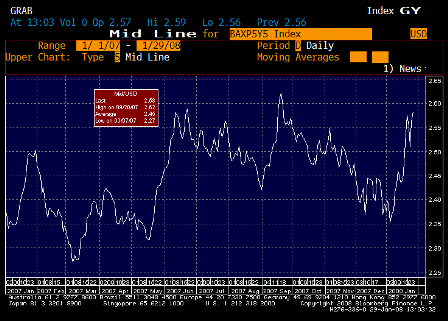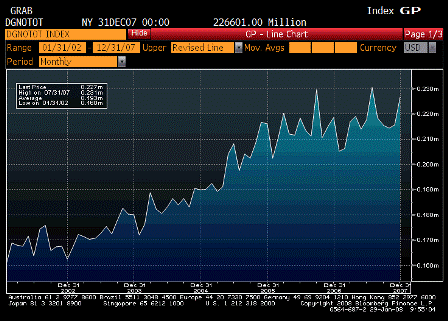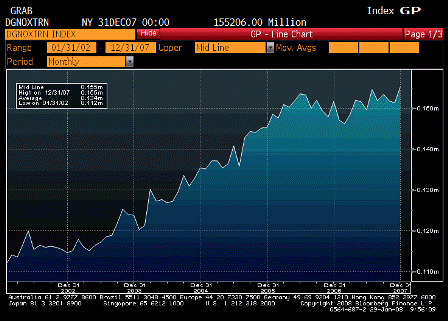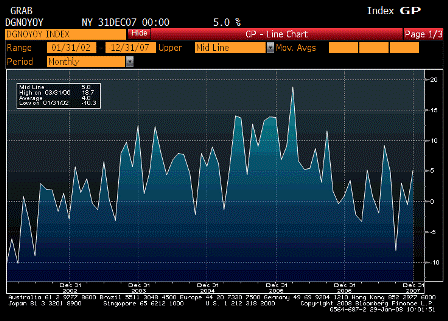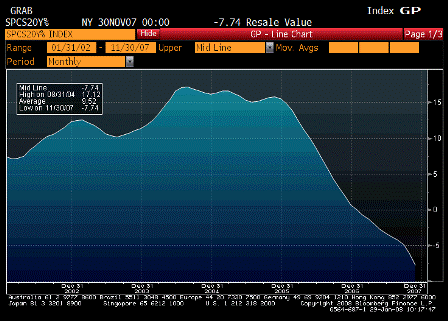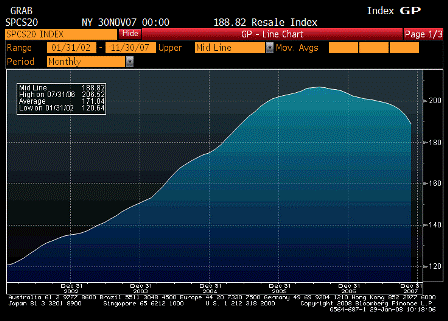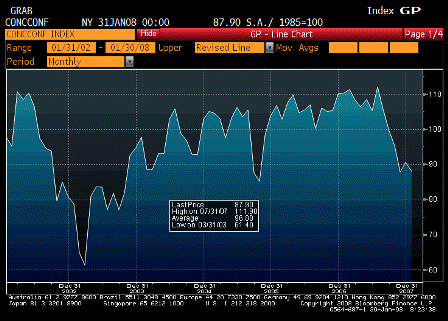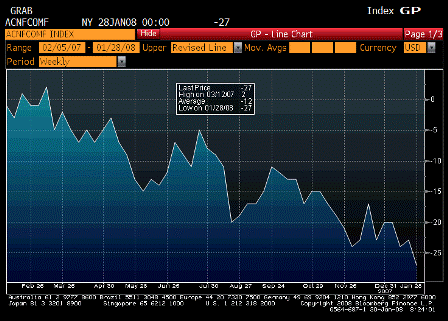Post: Comments on Brian Wesbury article
Comment by ‘Hoover Printing Press‘:
Warren congrats on your new website.
Thanks!
I keep reading that the bond insurers have let banks keep lots of “accounting issues†off the books – thus affecting tier 1 capital requirements – currently to the banks advantage. Without the bond insurers and their AAA rating by moody and sp (fitch has already lowered ratings down from AAA) the banks will have to scramble for lots of capital without the insurance, barclays recent estimate upwards of 150 billion. I remember Buffet referring to Financial WMD’s.
Yes, but that’s a matter of institutional structure. The government has several options.
For example:
- The government could change bank ‘haircuts’ to capital by allowing AA insured bonds to have the same or only marginally higher capital charges as AAA bonds. The capital requirements are somewhat arbitrary to being with and meant to serve public purpose.
- The government could offer some for of supplemental insurance at a fee to investors holding the AAA insured bonds in question. Again, for example, the fee could perhaps be 1%, and the government could guarantee a price of 97 to any investor who paid the fee. The government will probably make a profit on this type of program, as the monolines’ capital will still be in first lost position, and even if they are downgraded to AA, the implication is they will have more than sufficient capital to cover all losses. That is what AA means.
I read articles that NY is in a mad scramble to get buffet and others to bring some assurances to the bond insurance industry because the muni debt market is going to seize up without bond insurance and what the AAA ratings of that insurance lends to capital requirements and “accounting issues.â€ÂÂ
Yes. There are some institutional ‘land mines’ in place that the government can either prevent from being tripped or defuse directly (for a fee), as above.
In hoover’s time I remember reading from Rothbard’s great depression I believe that he printed but the banks used the money to shore up their reserves, they did not want to lend and spur the economy at the cost of their own survival.
Under that gold standard regime, the government was limited in what it could do. Deficit spending carried the risk of loss of gold reserves, for example. And, in fact, the US was forced off the gold standard in 1934 domestically and devalued for foreign holders of $. This was the only actual default in US history.
So why is Bush and congress giving joe six pack 150B when he could have used that to back the bond insurers and the banks?
No comment.. You must be new here??? :)
Possibly getting the ratings agency to save some face and for fitch to bring AAA ratings back to the bond insurers?
Or the supplemental plan, above, that doesn’t bail out the insurers.
On another point, you claim a large difference between hoover’s problems and our problems today is the gold standard and floating exchange rates. Unfortunately I must press you as to how that is so when the folks at the top of this chart (china) http://en.wikipedia.org/wiki/List_of_countries_by_current_account_balance have fixed exchange rates relating to the folks at the bottome of it (USA). Soros is claiming the USA will soon lose reserve currency status.
A fixed exchange rate ‘forces’ you to run a trade surplus to sustain sufficient reserves of gold or the reserve currency of choice. It also limits the ability to conduct countercyclical deficit spending as that leads to loss of reserves and default/devaluation/etc.
China has a ‘dirty float’, which means the currency is not convertible, but instead they intervene at various prices.
Not at all the same thing.
I am not so sure the Euro will be able to weather a global financial meltdown and perhaps in economic warfare, keeping reserve currency status is worth fighting over.
What is it, and why do you care?
With bush selling lots of scatter bombs to the house of Saud, at least we are trying to keep friends who have control over oil.
Still with the USA’s current account balance the worst of any country on the planet,
Imports are real benefits, exports real costs. In general, the larger your trade deficit, the higher your standard of living.
40K nukular bombs and a war machine that eats up large domestic resources, and a consumer base whose only skill is to shop till princess drops,
Consumption is the only point of economics.
I am not so sure what you are trying to save to get USA to deficit spend even MORE?
Right now, more deficit spending of the type proposed will mainly increase inflation.
Would it be so bad if that guy “dfense†from the mike douglas movie “FALLING DOWN†gets put out of a missle building job and starts fishing on the dock of the bay wasting time?
Comment by Scott Fullwiler:
Wesbury’s basically a monetarist (everything that goes wrong is the Fed’s fault for creating either too much or too little “liquidity”) operating with a gold standard model.
Yes, that’s where we don’t agree on causation and risks. But interesting that even in that paradigm, he doesn’t see the risks the Fed does, as they are in the same gold standard paradigm.
That said, he’s been bullish on the economy since 2002, and he’s been mostly right in that, except that he’s also been saying inflation is right around the corner since then, too, given weak dollar, strong gold.
And I’ve seen inflation underway due to Saudis acting as the swing producer and hiking price continuously.
And I see the weak $ as a change in preferences of non-resident holdings of financial assets.
Until a year and a half ago he was also claiming that the large spread b/n st and lt Treasuries was another a sign of inflation,
And I say it’s a sign of what investors think the Fed will be doing next. So to that extent, the curve reflects investor expectations. But there is also a lot of institutional structure that steers maturity preferences; so, the result is a mix of the two.
though he decided bond markets were being irrational once the yield curve inverted (again, if inflation is right around the corner).
Again, that reflects investor expectations.
I’ve used him in my classes for several years as a “balance” to the Levy view of “debt deflation’s around the corner.” Interesting to see that you and he are on the same page now at least regarding state of the economy, since you’ve been pessimistic (at least in long run, given small govt deficit) while he’s been a non-stop bull.
Yes, I’ve been expecting lower domestic demand since the financial obligations ratio go to where it go in Q2 2006, due to the shrinking budget deficit. What I missed was how strong exports would be, mainly on our three pronged weak dollar policy that has been scaring foreigners away from holding $US financial assets.
This includes calling CB’s currency manipulators if they buy $US, aggressive Middle Eastern policy, and the Fed’s apparent lack of concern for the value of the currency (inflation). Fundamentally, the falling budget deficit is good for the $US, but technically government policy has triggered an ‘inventory liquidation’ over seas that is causing exports to boom.
And now we are learning the hard way (or should be) what an export driven economy looks like – weak domestic demand due to high prices and full employment as we build goods and services for others.
♥

